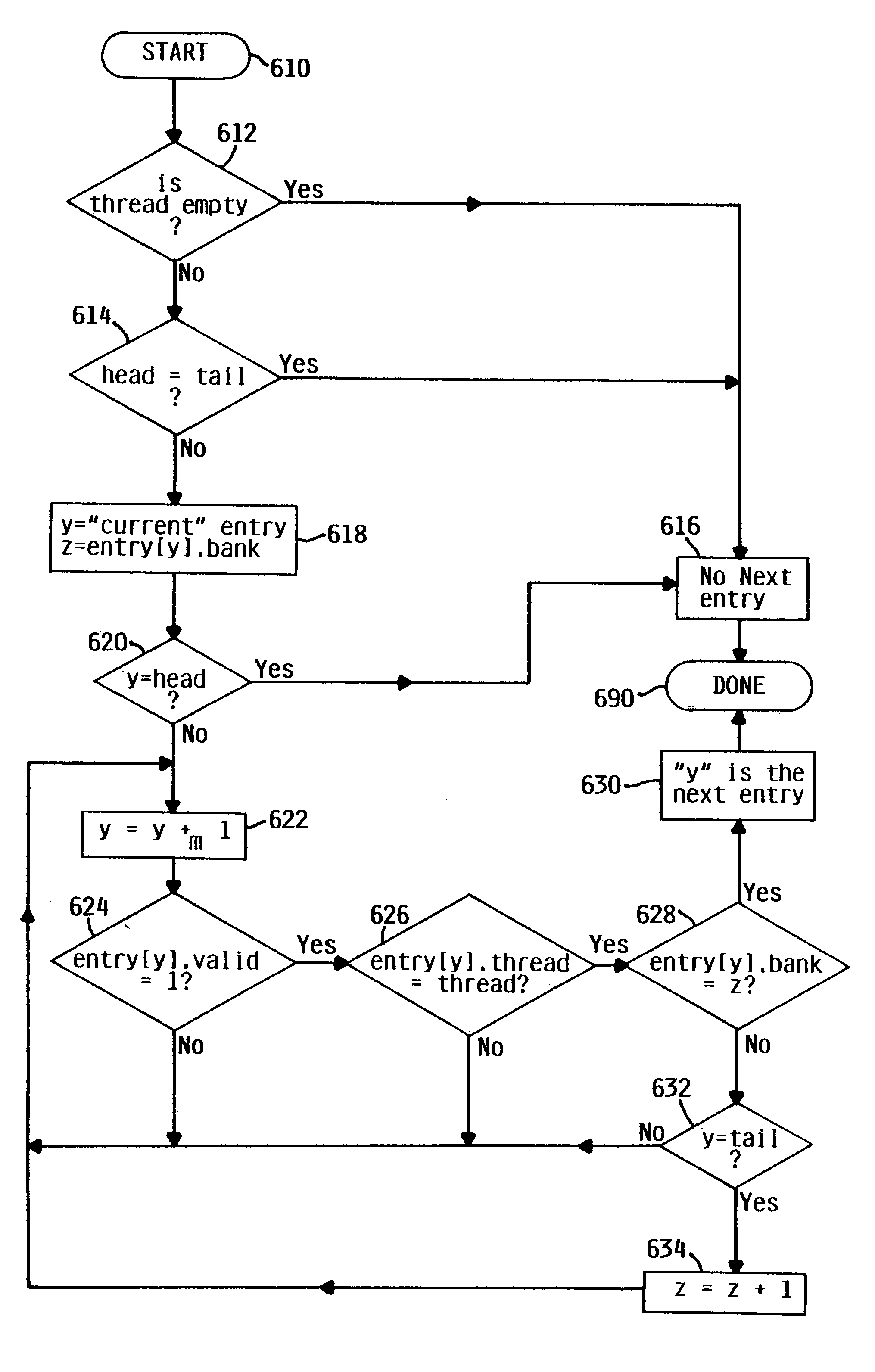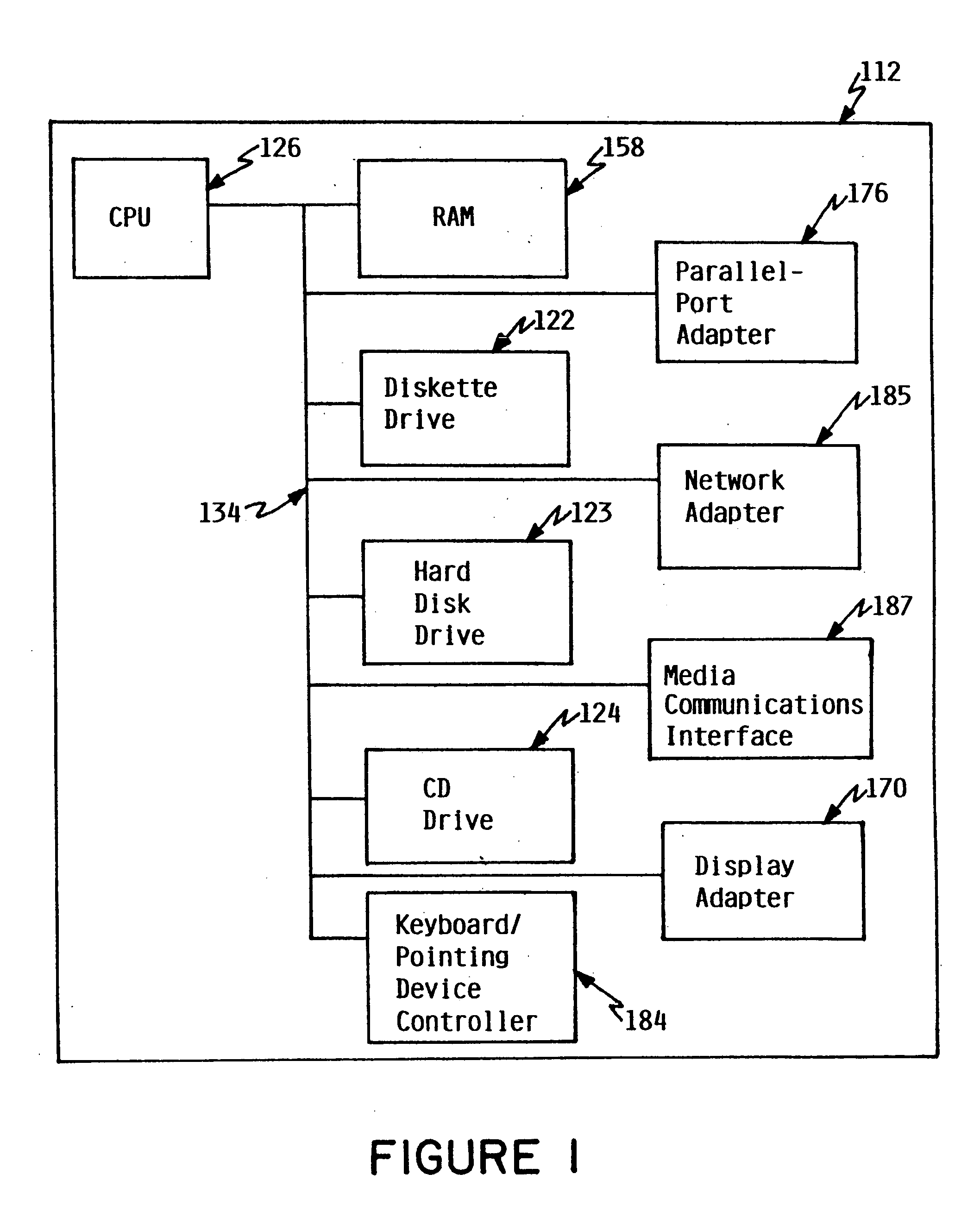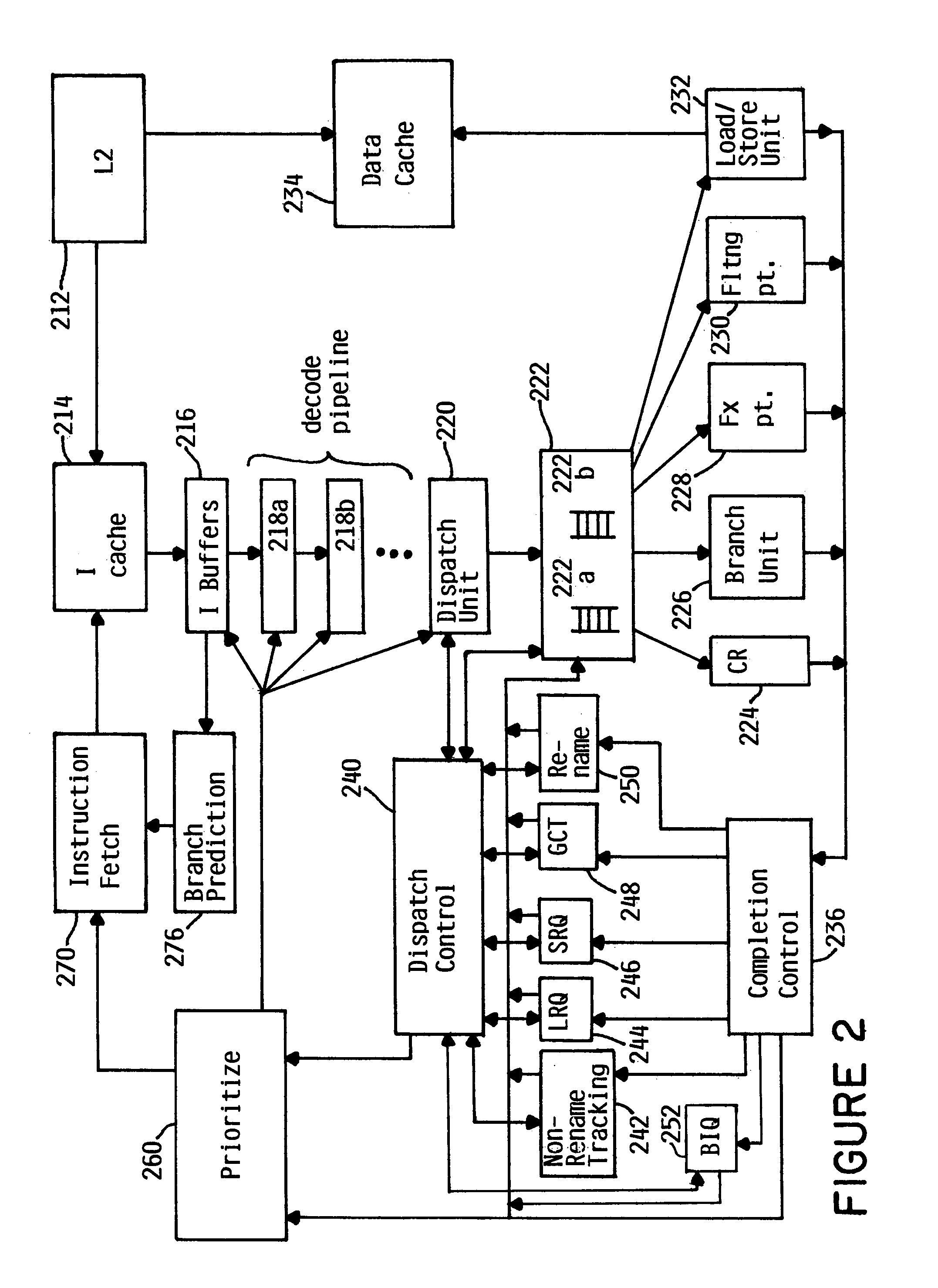Shared resource queue for simultaneous multithreading processing wherein entries allocated to different threads are capable of being interspersed among each other and a head pointer for one thread is capable of wrapping around its own tail in order to access a free entry
a technology of shared resource queue and multithreading processing, applied in the direction of program control, computation using denominational number representation, instruments, etc., can solve the problems of reducing physical size indefinitely, limiting the clock speed of continuously increasing processors, and it is much more difficult to coordinate functions for multiple cpus executing general purpose application programs. to achieve the effect of improving processor efficiency
- Summary
- Abstract
- Description
- Claims
- Application Information
AI Technical Summary
Benefits of technology
Problems solved by technology
Method used
Image
Examples
Embodiment Construction
[0040]Referring now to the Drawing wherein like numerals refer to the same or similar elements throughout and in particular with reference to FIG. 1, there is depicted a block diagram of the principal components of a processing unit 112, central processing unit (CPU) 126 may be connected via system bus 134 to RAM 158, diskette drive 122, hard-disk drive 123, CD drive 124, keyboard / pointing-device controller 184, parallel-port adapter 176, network adapter 185, display adapter 170 and media communications adapter 187. Internal communications bus 134 supports transfer of data, commands and other information between different devices; while shown in simplified form as a single bus, it is typically structured as multiple buses; and may be arranged in a hierarchical form.
[0041]CPU 126 is a general-purpose programmable multithreaded processor, executing instructions stored in memory 158. While a single CPU having multithreaded capabilities is shown in FIG. 1, it should be understood that c...
PUM
 Login to View More
Login to View More Abstract
Description
Claims
Application Information
 Login to View More
Login to View More - R&D
- Intellectual Property
- Life Sciences
- Materials
- Tech Scout
- Unparalleled Data Quality
- Higher Quality Content
- 60% Fewer Hallucinations
Browse by: Latest US Patents, China's latest patents, Technical Efficacy Thesaurus, Application Domain, Technology Topic, Popular Technical Reports.
© 2025 PatSnap. All rights reserved.Legal|Privacy policy|Modern Slavery Act Transparency Statement|Sitemap|About US| Contact US: help@patsnap.com



